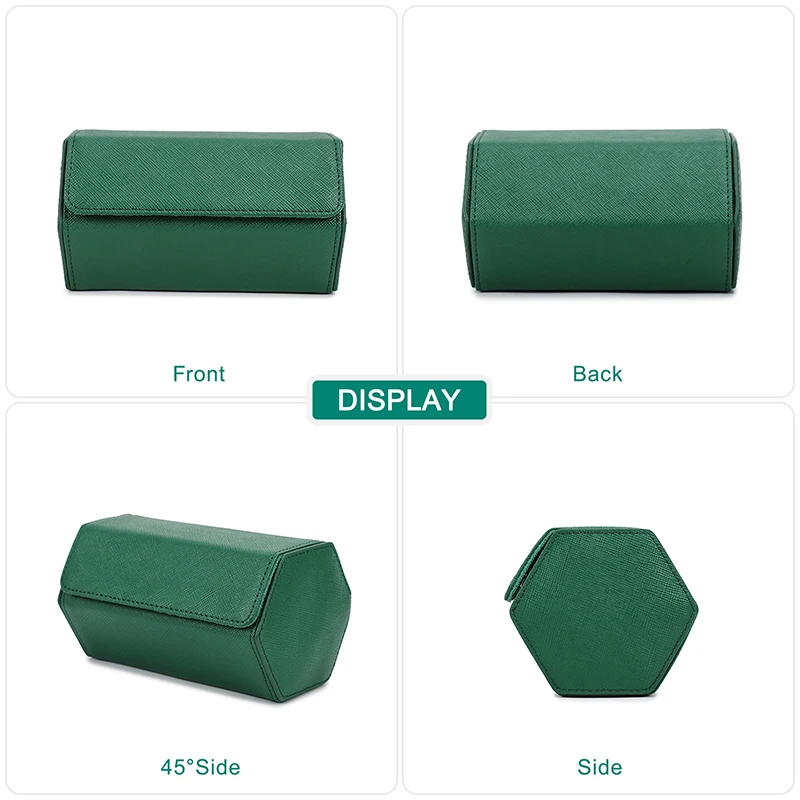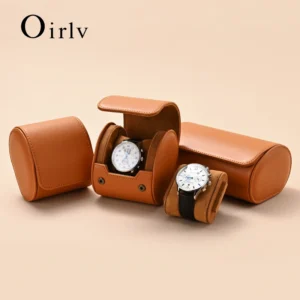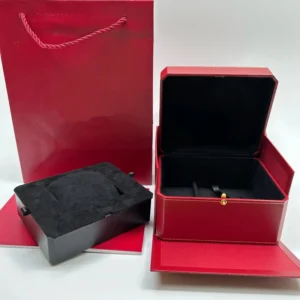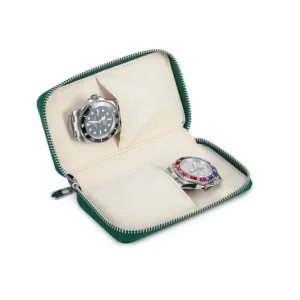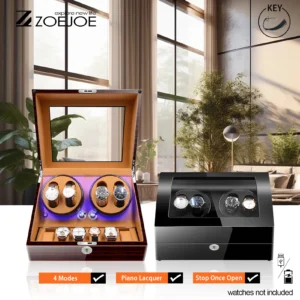Traveling with valuable timepieces requires careful planning and preparation. Whether you’re a watch enthusiast with a cherished collection or someone who simply wants to protect their everyday timepiece, knowing how to properly safeguard your watches during travel is essential. This comprehensive guide will walk you through proven strategies to keep your watches safe from damage, loss, and theft while you’re on the go.
Understanding Watch Travel Risks
When traveling with watches, you face three main categories of risks that could potentially damage or compromise your timepieces: physical damage, theft or loss, and insurance limitations. Being aware of these risks is the first step toward effective protection.
Physical Damage Risks
Your watch faces numerous physical threats during travel:
- Impact damage: Drops, bumps, and jolts that can occur during transit can damage delicate watch movements and crack crystals
- Scratches: Improper storage that allows watches to rub against other items or each other
- Environmental damage: Exposure to humidity, extreme temperatures, sand, saltwater, and chemicals like sunscreen
Environmental factors can be particularly insidious because damage may not be immediately apparent. Moisture intrusion can take days or weeks to show signs of damage to mechanical movements, while temperature extremes can affect lubricants and timing accuracy. For instance, humidity levels above 60% can potentially cause corrosion in watch movements over time, which is why proper long-term watch storage protection is crucial even during shorter trips.
Theft and Loss Concerns
Beyond physical damage, watches are vulnerable to theft and loss:
- Baggage handling issues: Rough handling by airport staff or automated systems
- Targeted theft: High-value watches attract specific attention from thieves
- Hotel room vulnerabilities: Even safes aren’t always secure
- Social media risks: Posting photos of luxury watches with location tags can make you a target
Insurance Gaps
Many travelers don’t realize that standard travel insurance and homeowner’s policies often fall short when it comes to valuable watches:
- Most standard policies have surprisingly low coverage limits for jewelry and watches ($1,000-$5,000)
- Many policies exclude coverage while traveling internationally
- Specific circumstances like “mysterious disappearance” may not be covered
- High deductibles might make claims impractical for less expensive pieces
Understanding these risks highlights why specialized protection strategies are necessary for traveling with watches. The good news is that with proper planning and the right equipment, you can significantly reduce these risks.
Essential Watch Travel Cases and Storage Solutions
The right travel case is your first line of defense against physical damage to your timepieces. With various options available, choosing the right protection depends on your specific travel needs and the number of watches you’ll be carrying.
Types of Watch Travel Storage
When selecting travel storage for your watches, consider these popular options:
| Case Type | Best For | Protection Level | Portability | Notable Features |
|---|---|---|---|---|
| Watch Rolls | Multiple watches | Medium-High | Excellent | Individual compartments, padding |
| Single Pouches | Day trips, minimal travel | Medium | Outstanding | Ultra-compact, lightweight |
| Hard Cases | Maximum protection | Highest | Moderate | Waterproof, crushproof |
Our collection of watch travel cases offers various options to suit different needs and preferences.
Material Considerations
The material of your watch case plays a significant role in protection level:
- Leather: Elegant appearance with good protection against scratches. Premium leather watch travel cases offer a balance of protection and sophistication.
- Ballistic nylon: Highly durable, resistant to tears and abrasion, often used in high-end travel cases
- Hard-shell materials: Maximum protection against crushing and impact, often featuring waterproof seals
- Microfiber interiors: Soft lining that prevents scratches on watch faces and bracelets
Protection Features to Look For
When evaluating watch travel storage options, pay attention to these key features:
- Individual compartments: Prevents watches from contacting each other
- Adequate padding: Absorbs impacts and vibrations
- Secure closures: Zippers, snaps, or latches that won’t open accidentally
- Cushioned dividers: Provides structure and prevents movement during transit
- Waterproof or water-resistant exteriors: Protects against unexpected moisture
Understanding the differences between various storage solutions is important. When comparing watch box vs watch roll options for travel, you’ll find that rolls typically offer better portability while boxes provide more rigid protection.
For different travel scenarios, your storage needs may vary:
* Short business trips might only require a slim single watch case
* Extended vacations with multiple activities might warrant a multi-watch case
* Adventure travel demands more rugged, waterproof protection
The right watch travel case combines protection against physical damage with convenience and portability, giving you peace of mind while keeping your timepieces secure.
Never Check Your Watches: Carry-On Best Practices
One of the most important rules of traveling with valuable watches is simple: never place them in checked luggage. This principle is non-negotiable for several critical reasons.
Why Checked Baggage Is Too Risky
Airlines explicitly state in their contracts of carriage that they are not liable for valuable items placed in checked luggage. This includes watches, jewelry, cash, and electronics. Even if your luggage is insured, most policies exclude high-value items or have very low coverage limits.
Additionally, checked baggage undergoes rough handling that you never witness:
* Automated conveyor systems with drops and turns
* Stacking under heavy bags with significant pressure
* Temperature and pressure changes in cargo holds
* Higher risk of theft from baggage handlers
⚠️ WARNING: Airlines typically limit liability for valuable items in checked luggage to $500-$1,000 total, which won’t cover even a moderately priced watch.
Navigating Security Checkpoints
When carrying watches through airport security, follow these practices:
- Keep watches in their protective cases inside your carry-on bag until clearing security
- Be prepared to remove watch cases for separate scanning (like electronics)
- Don’t place watches directly in security bins where they can get scratched
- Consider a small microfiber cloth to place underneath if you must remove a worn watch
- Never leave your watches unattended during the screening process
Compact single watch travel cases are particularly convenient for air travel as they take up minimal space while still providing adequate protection.
Protecting Cases Within Carry-On Luggage
Once your watches are in their protective cases, you still need to position them carefully within your carry-on:
- Place watch cases in the center of soft items, not against hard edges
- Keep them away from liquids that might leak
- Avoid placing them near the outer edges where they’ll absorb impacts
- Consider watch roll travel cases that can be positioned safely among clothing items
Keep Your Carry-On in Sight
The final component of carry-on watch security is maintaining constant awareness of your bag:
* Keep your bag in front of you in lines and crowded areas
* In restaurants or cafes, secure bag straps around chair legs or your own leg
* On trains or buses, hold your bag in your lap rather than placing it on overhead racks
* When sleeping during travel (like on flights), loop a bag strap around your arm or leg
By following these carry-on best practices, you significantly reduce the risk of theft, loss, and damage to your watches during the most vulnerable part of travel—transportation.
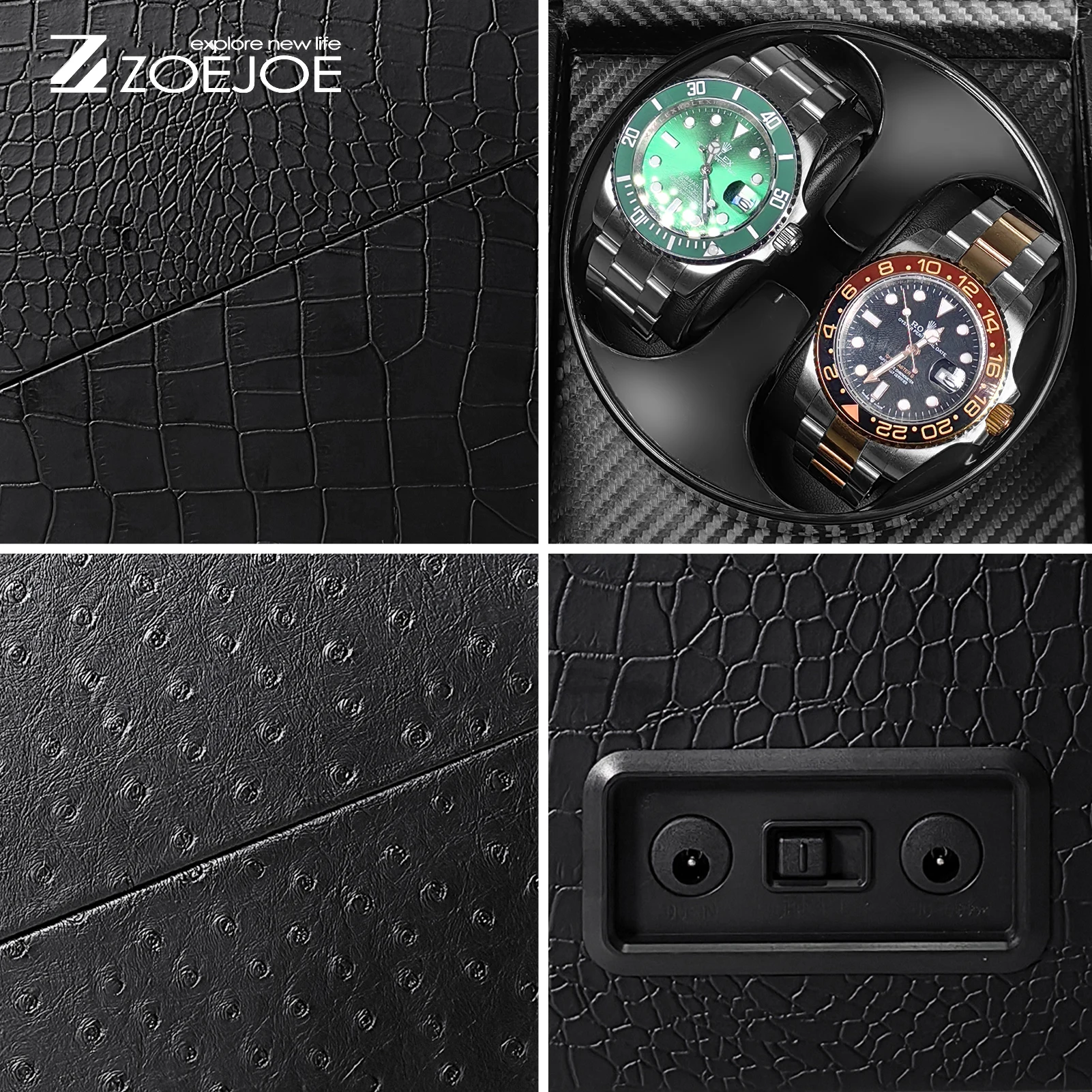
Pre-Travel Watch Preparation Checklist
Before packing your watches for a trip, proper preparation can prevent problems and ensure they arrive at your destination in perfect condition. Follow this checklist to ensure your timepieces are travel-ready:
Assess watch condition: Check for loose components, crystal integrity, and proper functioning before packing.
Service check timing: If your watch is approaching its service interval, consider having it serviced before extended travel rather than risking issues while away.
Secure the crown: For watches with screw-down crowns, ensure they’re fully secured to prevent moisture intrusion.
Check water resistance: If your watch is water-resistant, verify the seals are intact, especially if you plan water activities.
Adjust and secure straps: Ensure straps and bracelets are properly sized and secure. Consider bringing extra spring bars or strap tools for emergencies.
Clean watches thoroughly: Remove dirt, oils, and residue before packing to prevent these substances from causing damage during transit.
Document condition: Take clear photos of each watch from multiple angles to document pre-trip condition for insurance purposes.
Record essential information: Write down serial numbers, reference numbers, and purchase details for each timepiece.
Consider strap changes: Different environments may call for different straps—leather can deteriorate in humid conditions, while rubber or NATO straps may be better for beach destinations.
Prepare maintenance supplies: Pack a travel-sized watch care kit including a microfiber cloth, small cleaning brush, and potentially strap-changing tools.
Organize documentation: Gather and secure digital copies of warranty cards, purchase receipts, and insurance information.
Check battery status: For quartz watches, ensure batteries aren’t nearing end-of-life before a trip.
Organizing your watch collection effectively before travel not only helps with preparation but makes selection and packing much easier. With proper organization, you can quickly assess which pieces are appropriate for your destination and activities.
This preparation process typically takes less than an hour but can save significant stress, time, and potential financial loss during your travels. A well-prepared watch is much less likely to experience problems away from home.
Environmental Protection Strategies
Different travel destinations present unique environmental challenges for watches. Understanding these factors and preparing accordingly will help keep your timepieces safe from environmental damage.
Humidity Protection
High humidity environments can cause significant damage to watches, particularly mechanical ones:
* Moisture can penetrate case seals and cause corrosion on movement components
* Condensation can form under crystals when moving between air-conditioned spaces and humid exteriors
* Leather straps can develop mold or mildew in humid conditions
Protection strategies:
* Use silica gel packets in your watch case to absorb excess moisture
* Keep watches in airtight cases when not being worn
* Consider silicone or rubber straps instead of leather for humid destinations
* Allow watches to acclimate to ambient temperature before opening cases
Temperature Management
Extreme temperatures affect watch performance and can potentially cause damage:
* Heat can degrade lubricants in mechanical movements
* Cold temperatures can affect timing accuracy
* Rapid temperature changes can cause condensation
Protection strategies:
* Never leave watches in hot cars or direct sunlight
* Allow watches to gradually acclimate to temperature changes
* In extreme cold, keep watches close to your body when outdoors
* Consider leaving valuable vintage pieces at home when visiting extreme climates
Beach and Water Exposure
Beach environments combine multiple threats to watches:
* Sand particles can scratch cases and crystals and damage crowns and bezels
* Saltwater is highly corrosive to watch metals
* Sunscreen chemicals can degrade gaskets and damage finishes
Protection strategies:
* Rinse watches with fresh water after ocean exposure (if they’re water-resistant)
* Clean watches thoroughly after beach days, paying special attention to crown areas
* Apply sunscreen first and allow it to absorb before putting on your watch
* Consider dedicated “beach watches” rather than wearing valuable pieces
Altitude Considerations
High-altitude destinations present unique challenges:
* Lower air pressure can affect the water resistance of some watches
* Extreme cold at high elevations affects battery performance and mechanical movement accuracy
* Drastic altitude changes can stress case seals
Protection strategies:
* Ensure watches are recently pressure-tested if planning high-altitude activities
* Allow watches to adjust gradually to altitude changes when possible
* Be extra vigilant about moisture protection at high altitudes
Our selection of watch accessories includes several items that can help protect your watches from these environmental challenges, from moisture-absorbing products to specialized cleaning tools.
Travel Watch Selection Strategy
Choosing which watches to bring on your travels requires careful consideration of both practical needs and security concerns. A thoughtful selection strategy reduces risks while ensuring you have appropriate timepieces for all activities.
The Versatile Travel Watch Concept
Rather than bringing numerous specialized watches, consider selecting versatile pieces that work across multiple situations:
* A watch with 100m+ water resistance works for both casual and water activities
* Watches with simple, clean designs can transition from day to evening wear
* Neutral colors and materials pair well with different outfits and occasions
* Automatic watches eliminate battery concerns during extended trips
Risk Assessment and Selection
Adapt your watch selection based on destination risk factors:
* Research crime statistics and tourist targeting at your destination
* Consider cultural factors—some locations may draw attention to luxury items
* Evaluate activities planned—adventure travel demands more robust watches
* Assess transportation security throughout your itinerary
Benefits of Bringing Fewer Watches
There are significant advantages to traveling with a minimal watch selection:
* Reduced risk of loss or theft
* Simplified security management
* Less storage space needed
* Decreased insurance concerns
* Easier tracking and accountability
When choosing your travel watches, understanding different types of watch storage options can help determine how many pieces you can safely accommodate. Similarly, knowing about security features in travel watch cases will inform both your selection process and protection strategy.
Selection Framework Questions
Ask yourself these questions when deciding which watches to pack:
* Is this watch easily replaceable if lost or damaged?
* Would this watch make me a target in my destination?
* Does this watch suit the activities I’ve planned?
* Can this watch handle the environmental conditions I’ll encounter?
* Do I have adequate protection and insurance for this particular watch?
Most watch enthusiasts find that two to three carefully chosen watches provide ample variety without creating unnecessary risk or management burdens during travel.
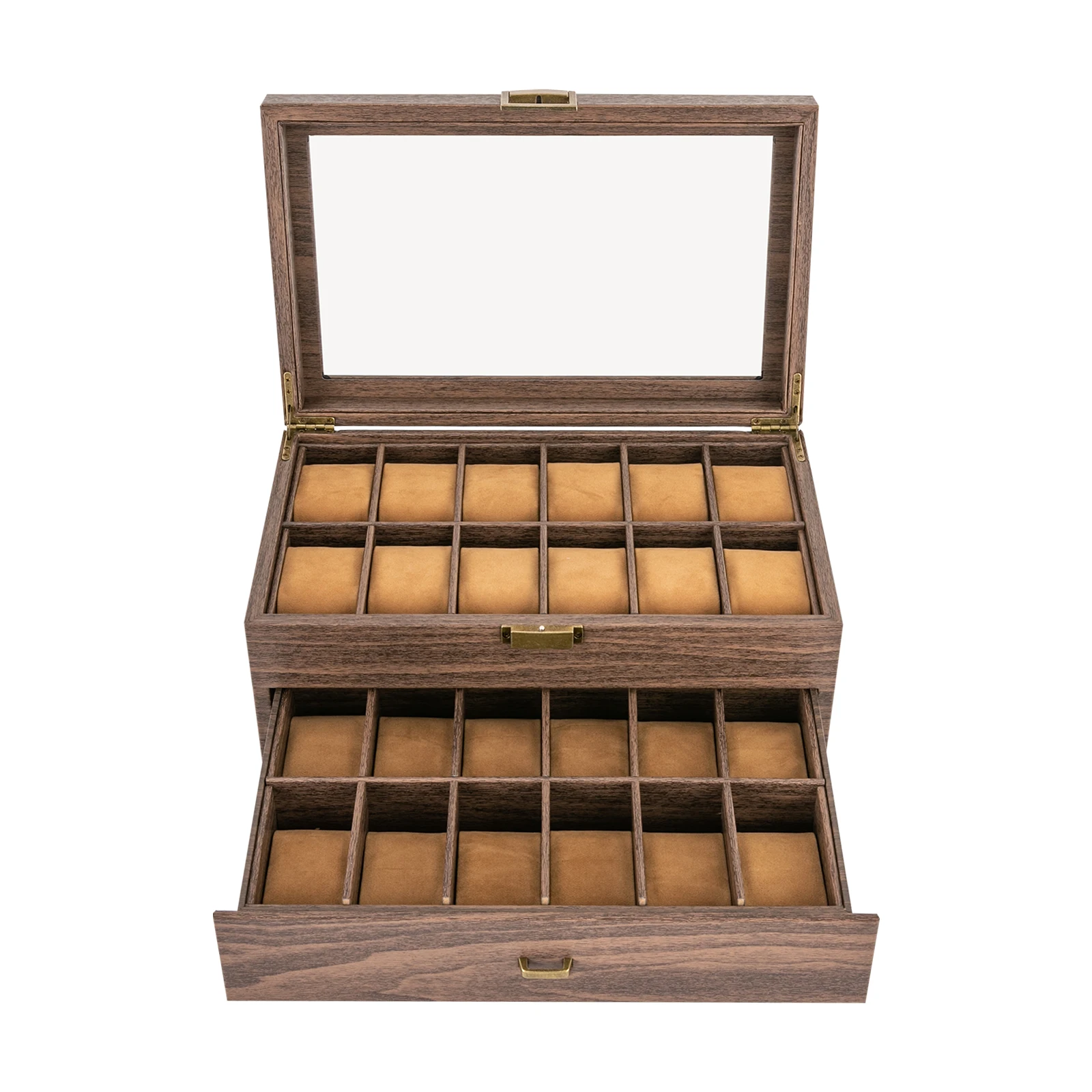
Security Protocols at Your Destination
Once you’ve arrived at your destination, maintaining vigilant security practices is essential for protecting your watches from theft or loss. Different accommodation types require different approaches to watch security.
Hotel Safe Considerations
Hotel safes are convenient but have notable limitations:
* Most in-room safes can be accessed by hotel staff with override codes
* Many hotel safes are poorly anchored and could be removed entirely
* Electronic safes can malfunction, potentially locking your valuables inside
Best practices for hotel safes:
* Use the safe for short-term storage when you’re out of the room
* Set a non-obvious code (avoid birthdays or simple sequences)
* Consider using the hotel’s front desk vault for extremely valuable pieces
* Test the safe operation before storing watches
* Take photos documenting what you’ve placed in the safe
For accommodations without safes or for additional protection, consider secure watch storage options for bedroom or living room that aren’t immediately obvious to potential thieves.
Situational Awareness in Public
Maintaining awareness while wearing watches in public reduces theft risk:
* Be conscious of your surroundings, especially in crowded tourist areas
* Avoid checking or adjusting your watch in public, which draws attention to it
* Cover your watch with a sleeve when in questionable areas
* Turn watch dials inward toward your wrist in high-risk situations
* Avoid wearing watches in areas known for snatch-and-grab thefts
Low-Profile Strategies
Drawing less attention to valuable timepieces increases security:
* Consider wearing less recognizable or “flashy” watches in public
* For luxury pieces, consider alternative straps that make iconic models less identifiable
* Remove watches before entering areas where they might draw unwanted attention
* Avoid discussing or showing off watches to strangers
* Never post real-time social media updates showing watches with your location
For travelers with particularly valuable collections, implementing luxury watch storage setup principles even in temporary accommodations provides additional security layers.
Shared Accommodation Security
When staying in shared spaces like hostels or vacation rentals:
* Never leave watches unattended in common areas
* Use portable travel safes that can be secured to immovable objects
* Consider concealment options like specially designed books, cans, or other containers
* Maintain possession of your watch case when possible rather than leaving it in the accommodation
By implementing these security protocols, you significantly reduce the risk of theft while still enjoying your watches during travel. Remember that consistent vigilance is your best protection against opportunistic theft.
Watch Accessories, Watch Holder
$94.51 Select options This product has multiple variants. The options may be chosen on the product pageSingle Watch Travel Case, Watch and Jewelry Box, Watch Roll Travel Case
Price range: $93.44 through $140.65 Select options This product has multiple variants. The options may be chosen on the product pageAutomatic Watch Winder, Luxury Watch Winder, Single Watch Box
$307.39 Select options This product has multiple variants. The options may be chosen on the product pageLuxury Watch Boxes, Luxury Watch Travel Case
Price range: $200.33 through $224.57 Select options This product has multiple variants. The options may be chosen on the product pageLeather Watch Travel Case, Men's Watch Travel Case, Watch Roll Travel Case
Price range: $91.37 through $92.63 Select options This product has multiple variants. The options may be chosen on the product page4 Watch Winder, 6 Watch Box, Automatic Watch Winder
$512.31 Select options This product has multiple variants. The options may be chosen on the product page
Essential Documentation for Watch Travel
Proper documentation serves multiple crucial purposes when traveling with watches: establishing ownership, facilitating insurance claims, and simplifying customs processes. Creating a comprehensive documentation portfolio before departure provides valuable protection against various travel risks.
Creating Your Documentation Portfolio
Assemble both digital and physical documentation that includes:
- Serial numbers and reference numbers: Record these for each watch in a secure format
- Clear photographs: Take multiple angles showing distinguishing features and condition
- Purchase receipts or certificates: Copies of original purchase documentation
- Appraisal certificates: Recent professional appraisals for valuable pieces
- Insurance policy details: Policy numbers, contact information, and coverage specifics
Keep digital copies in multiple locations:
* Cloud storage with secure access
* Encrypted file on your phone
* Email copies to yourself
* Share with a trusted contact at home
For physical copies, separate them from your watches to prevent losing both simultaneously.
Photography Guidelines for Documentation
Effective documentation photos should include:
1. Full watch images showing the entire piece
2. Close-ups of the dial with visible unique markings
3. Case back with visible serial numbers (when accessible)
4. Any distinctive features or customizations
5. Any existing damage or wear (for pre-trip condition documentation)
Use neutral backgrounds with good lighting and include a size reference in at least one photo.
Customs Considerations
For international travel with valuable watches:
* Research duty and import regulations for both your destination and return country
* Consider obtaining a Certificate of Registration for Personal Effects (or similar customs document) for very valuable pieces
* Be prepared to declare watches purchased abroad when returning home
* Keep purchase documentation accessible during border crossings
* Know the value thresholds that trigger customs declaration requirements
This documentation not only helps with potential insurance claims but also validates ownership if your watch is recovered after theft. The effort required to create proper documentation is minimal compared to the potential complications of traveling without it.
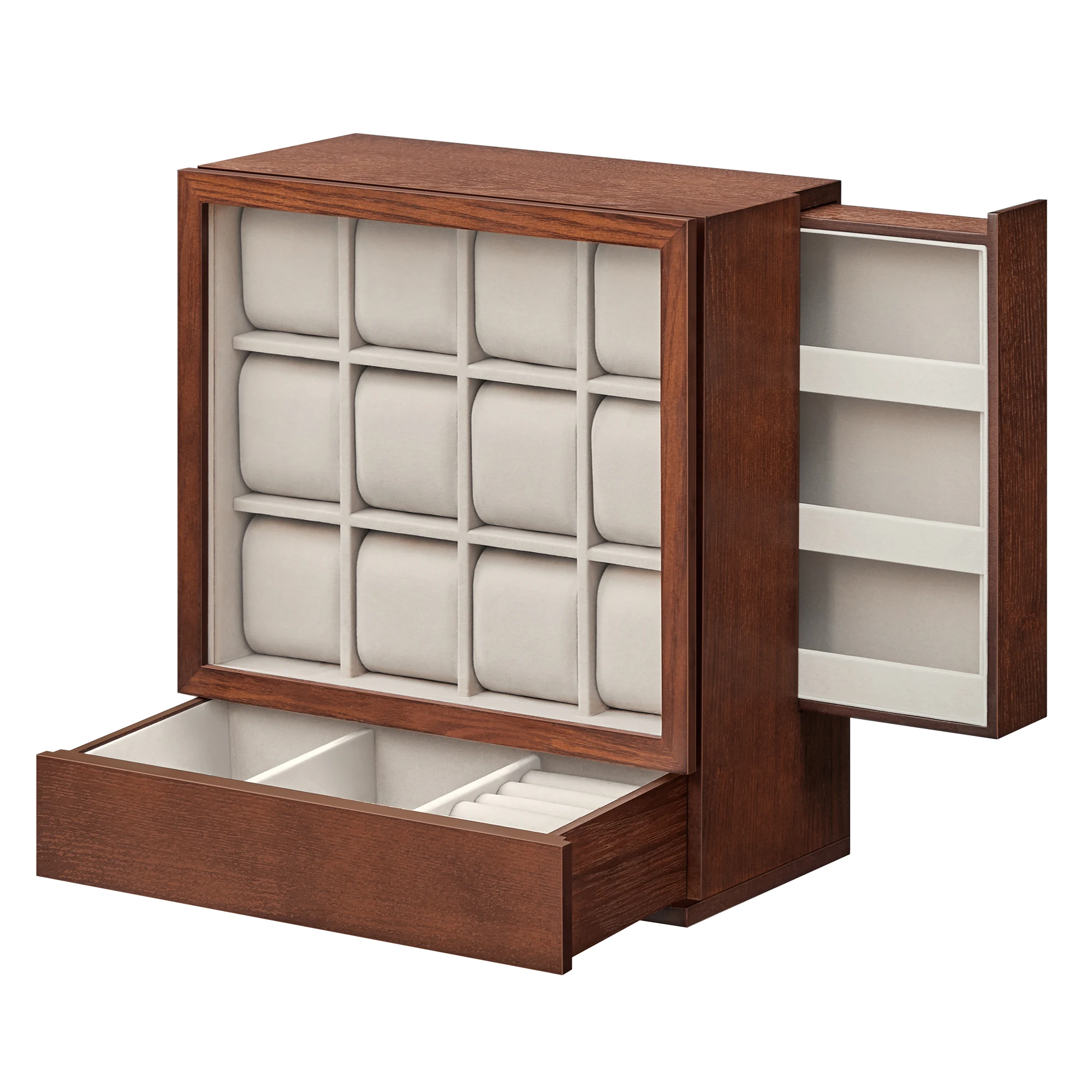
Specialized Watch Insurance for Travelers
Standard insurance policies often fall short when it comes to protecting valuable watches during travel. Understanding specialized insurance options provides crucial financial protection beyond physical safeguards.
Limitations of Standard Policies
Most travelers don’t realize that their existing insurance has significant gaps:
* Homeowner’s and renter’s insurance typically limits valuable item coverage to $1,000-$5,000
* Standard policies often exclude coverage outside your home country
* Many have high deductibles that make claims for less expensive watches impractical
* Certain loss scenarios like “mysterious disappearance” may not be covered
* Documentation requirements may be strict and difficult to satisfy after a loss
Specialized Watch Insurance Options
Several types of specialized coverage better protect traveling watch enthusiasts:
Valuable Articles Policies:
* Specifically designed for high-value items including watches
* Often provide worldwide coverage without geographic limitations
* Usually have no deductibles for covered losses
* Cover a broader range of loss scenarios including mysterious disappearance
* Offer agreed value coverage rather than depreciated value
Collection Insurance:
* Designed for collectors with multiple valuable pieces
* Provides blanket coverage with itemization of specific high-value watches
* Often includes coverage for newly acquired pieces during travel
* May offer preferred repair options with specialized watchmakers
Travel Insurance Add-ons:
* Some premium travel insurance plans offer high-value item riders
* Provide temporary coverage specifically during trip duration
* Often have simplified claims processes designed for travelers
Key Policy Features to Look For
When evaluating watch insurance for travel, prioritize these features:
* All-risk worldwide coverage with no geographic exclusions
* Coverage for mysterious disappearance (loss without explanation)
* No deductible or low deductible options
* Agreed value coverage based on appraisals
* Coverage during transit and at temporary accommodations
* Reputation for fair and efficient claims handling
For travelers with particularly valuable pieces, luxury watch travel cases provide an additional layer of physical protection that complements insurance coverage. The combination of proper physical protection and comprehensive insurance creates a complete safety net for your timepieces.
Claims Process Preparation
To facilitate potential claims while traveling:
* Keep insurance contact information readily accessible
* Understand your policy’s reporting timeframes and requirements
* Know what documentation will be required for a claim
* Have a plan for obtaining police reports if necessary
* Identify authorized repair facilities at your destination
With proper specialized insurance, you gain both financial protection and peace of mind, allowing you to enjoy your watches during travel without constant worry about potential losses.
When to Consider a Travel Watch Winder
Do I need a watch winder when traveling?
You might need a travel watch winder if you’re traveling for extended periods with multiple automatic watches that you won’t wear every day. Automatic watches need regular movement to keep running, and a winder simulates the natural motion of your wrist. Without regular winding, your automatic watches will stop and require resetting upon your return, which can be inconvenient for watches with complex features like perpetual calendars or moon phases.
However, for shorter trips under a week, or if you’re only bringing one automatic watch that you’ll wear daily, a winder is unnecessary. Many watch enthusiasts actually prefer to let their watches stop during short trips, as it gives the movement a rest and reduces wear.
What makes a travel watch winder different from regular ones?
Travel watch winders are designed with portability in mind, featuring:
* Compact, lightweight construction compared to home units
* Battery operation or dual power options (not solely dependent on wall outlets)
* Simplified programming with fewer settings
* More robust cases to withstand transportation
* Often fewer winding positions (typically 1-2 watches versus 4+ for home units)
These specialized winders from our watch winders collection prioritize function and durability over the aesthetic considerations that often drive home winder design.
What types of watches benefit most from travel winders?
Not all watches need winders during travel. The watches that benefit most include:
* Complicated automatic watches with perpetual calendars or moon phases
* Watches with day/date features that are tedious to reset
* Vintage pieces that might be challenging to set accurately
* Watches with delicate setting mechanisms that are best left undisturbed
* Collections where you’ll rotate between several automatic pieces during your trip
Simple time-only automatic watches or modern robust movements generally don’t require winders for typical travel durations.
How do different travel winder options compare?
Travel winders range from basic to sophisticated:
Single Winders:
* Most compact option
* Typically battery-powered
* Limited programming options
* Most affordable
* Ideal for travelers bringing just one automatic watch
Dual/Multi-position Winders:
* Support 2-4 watches in a travel-friendly size
* Often feature dual power (battery and AC)
* More programming flexibility for different watch requirements
* Higher price point
* Better for longer trips with multiple watches
For most travelers, specialized watch storage solutions for travelers that include winding functionality offer the best balance of protection and convenience.
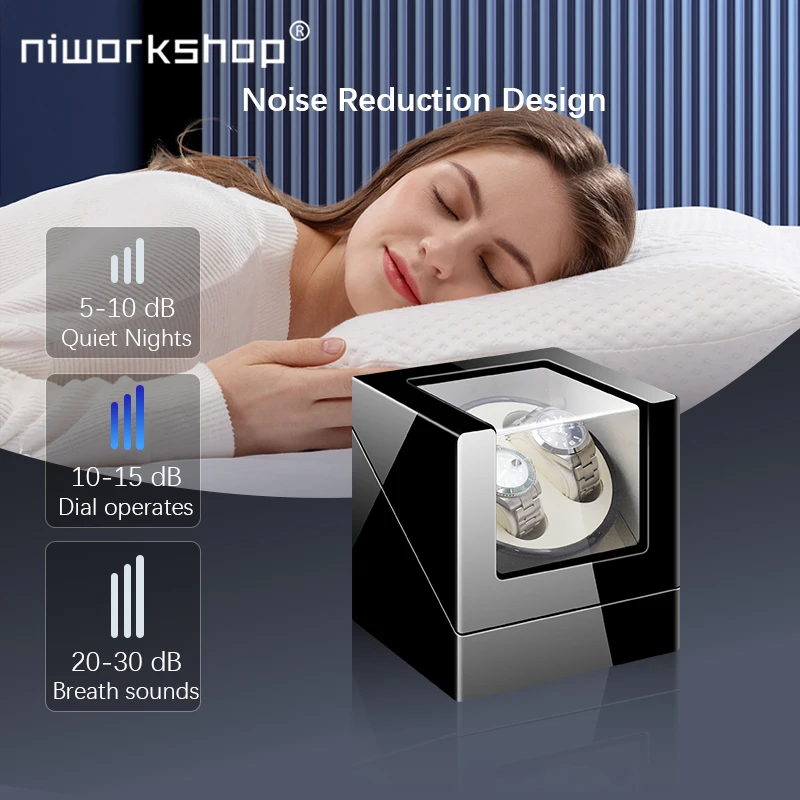
Watch Travel in Extreme Environments
Standard watch travel precautions may not be sufficient when heading to environments with extreme conditions. These specialized scenarios require additional protection measures to safeguard your timepieces.
High-Altitude Considerations
At elevations above 6,000 feet (1,800 meters), watches face unique challenges:
* Decreased air pressure can compromise water resistance in some watches
* Temperature fluctuations between day and night are more extreme
* UV radiation is more intense and can potentially fade dials over time
* Low humidity can affect leather straps, causing cracking
Protection strategies include using watches rated for at least 100m water resistance, storing watches in airtight cases when not worn, and considering alternate strap materials like rubber or NATO instead of leather.
Extreme Temperature Environments
Very hot or cold destinations require special attention:
* In desert heat (above 100°F/38°C), avoid leaving watches in direct sunlight or in vehicles
* In extreme cold (below 20°F/-7°C), mechanical watch lubricants may thicken, affecting accuracy
* Rapid temperature changes can cause condensation inside watch cases
For these environments, consider budget-friendly watch storage options with thermal insulation properties, and always allow watches to acclimate gradually to temperature changes.
High-Dust Environments
Desert, beach, or construction areas present particle contamination risks:
* Fine dust can infiltrate crowns and pushers
* Sand can scratch crystals and case finishes
* Particles can damage bezels and other moving components
Protection requires cases with excellent seals, regular cleaning with soft brushes, and avoiding changing settings in dusty environments. Watch storage ideas for collectors often include dust-protection features that are valuable in these environments.
Humid Tropical Environments
Rainforests and tropical destinations combine heat with extreme humidity:
* Humidity above 80% increases risk of moisture infiltration
* Fungus and mold can develop on straps and in cases
* Corrosion risk increases significantly for all metal components
When traveling to these regions, prioritize watches with excellent water resistance, store watches with silica gel packets, and consider watch storage solutions for small spaces that include moisture protection features.
By adapting your protection strategies to these extreme environments, you can enjoy your watches in even the most challenging conditions without risking damage.
Watch Recovery After Travel Incidents
Despite best precautions, accidents can happen. Knowing how to respond quickly to watch incidents during travel can prevent minor problems from becoming major damage.
Moisture Exposure Response
If your watch is exposed to moisture or shows signs of condensation:
1. Remove the watch from your wrist immediately
2. Dry the exterior completely with a soft, clean cloth
3. For serious water intrusion (visible condensation under crystal):
* Do not open the case back yourself
* Do not place in direct heat (hair dryers, heaters)
* Place watch in a container with uncooked rice or silica gel to draw out moisture
* Seek professional service as soon as possible
Impact Damage Assessment
If your watch suffers a fall or impact:
1. Check for visible damage to crystal, case, and crown
2. Listen for unusual sounds that might indicate loose components
3. Monitor timekeeping for sudden accuracy changes
4. Test crown and bezel function for any changes
5. If any issues are detected, stop wearing the watch and seek professional assessment
Finding Emergency Service While Traveling
If you need immediate professional help:
1. Contact the watch brand’s nearest authorized service center
2. In major cities, luxury hotels often have connections to reputable watch repair services
3. Check with local watch collector groups online for recommendations
4. Avoid unknown repair shops without verifiable credentials
5. Consider temporary protective measures until you can reach proper service
Documentation for Insurance Claims
If damage or loss occurs requiring an insurance claim:
1. Take detailed photographs of the damage
2. File a police report for theft or loss (required by most insurance policies)
3. Contact your insurance provider within the required reporting timeframe
4. Preserve all evidence and damaged items for potential inspection
5. Gather witness statements if applicable
6. Keep all receipts related to temporary repairs or replacement
Using resilient mens watch travel cases can prevent many common travel incidents, but knowing how to respond when problems occur is equally important for protecting your timepieces.
By following proper emergency response protocols, you can minimize damage and position yourself for successful insurance claims or repairs. Remember that immediate action is often crucial to preventing minor problems from escalating into permanent damage.
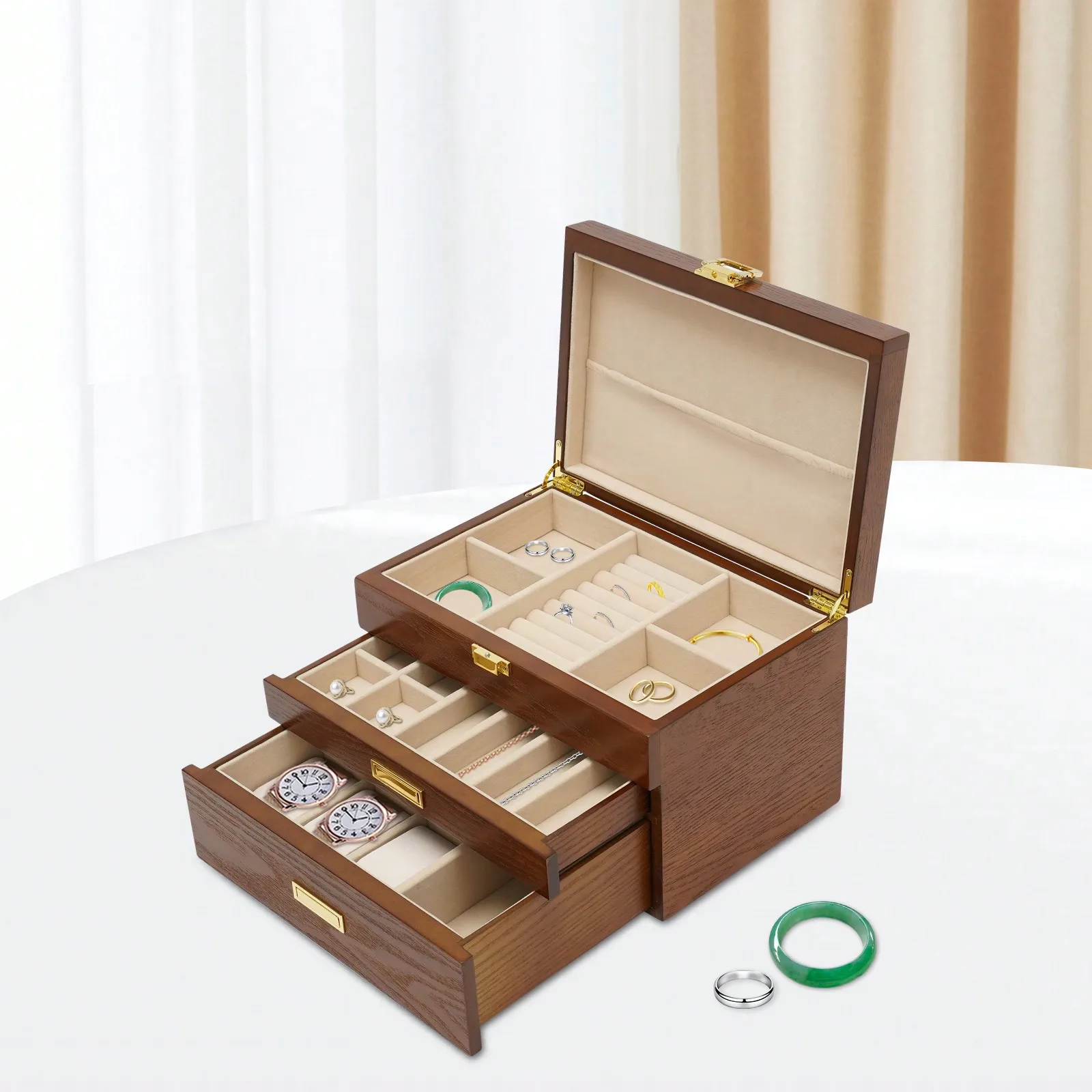
Traveling with watches doesn’t have to be stressful. With proper planning, appropriate cases, and smart security practices, you can safely enjoy your timepieces wherever your journeys take you. The key is creating multiple layers of protection—physical cases, careful handling, security awareness, proper documentation, and specialized insurance—that work together to safeguard your valuable watches.
At Daily Accents, we understand the importance of protecting your cherished timepieces. Our premium watch travel solutions are designed by watch enthusiasts who understand the unique challenges of traveling with valuable watches. By investing in quality protection now, you’re ensuring many more years of enjoyment from your watch collection, no matter where your travels take you.

